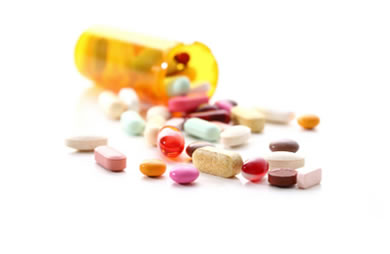|
You’ve probably seen those new green checkmark labels that are starting to show up on lots of packaged food products in your grocery store. The label is intended to be a guide for consumers who want to make healthier choices when shopping for groceries. It’s part of a new program called “Smart Choices” that’s sponsored by a group of 10 major food producers, including Kellogg’s, General Mills, ConAgra Foods, Tyson Foods, and PepsiCo. In order to display the Smart Choice label, a product must meet nutritional guidelines established by the program, which set limits on the amount of sugar, salt, and fat a product can contain, and specify that it should have a certain amount of desired nutrients like fiber, vitamins and minerals. Sounds pretty good, right? Many people don’t pay much attention to the food labels on these same products, so having a simple label prominently displayed on the front of the package could be a good way to let people know which products are more nutritionally sound than others. But as usual, the devil is in the details—in this case, the details of the program’s nutritional guidelines. It seems that both Froot Loops and Cocoa Crispies are eligible for the Smart Choice label, as are both lite and regular mayonnaise, and any frozen or packaged meals with up to 600 milligrams of sodium in them (25% of the recommended maximum intake). What’s going on here? Walter C. Willett, chairman of the nutrition department of the Harvard School of Public Health, told the New York Times that “these are terrible choices.” He claimed that the nutritional criteria adopted by the Smart Choices program allowed less healthy products like artificially sweetened cereals and heavily salted processed meals to win its seal of approval, and rendered the program “not credible.” Both the Food and Drug Administration and the Department of Agriculture have decided to closely monitor the use of the Smart Choices label. They’ve already sent the program a letter stating that they are concerned that the Smart Choices could have “the effect of encouraging consumers to choose highly processed foods and grains instead of fruits, vegetables and whole grains.” On the other side of the fence is Dr. Eileen Kennedy, president of the Smart Choices board and dean of the Friedman School of Nutrition Science and Policy at Tuft’s University. She said (in the NYT article) that the label isn’t designed to distinguish “healthy” foods from “unhealthy” foods in any absolute way, because people don't much like to be told what they should or shouldn't eat. Rather, “the checkmark means the food item is a ‘better for you’ product….You’re rushing around, you’re trying to think about healthy eating for your kids and you have a choice between a donut and a cereal. So Froot Loops is a better choice.” Using this logic, Froot Loops qualifies for the label because it meets the Smart Choices program’s standards for fiber, Vitamins A and C, and does not exceed the limits for fat, sodium or sugar. But it has the maximum allowed amount of sugar per serving (12 grams), the vitamins are all added, and the sugar content is 41% of the product, by weight. According to Michael Jacobson, director of the Center for Science in the Public Interest, “you could start out with some sawdust, add calcium or Vitamin A, and meet the criteria.” The debate over the Smart Choices program reveals some pretty important and basic questions about what we ought to mean when we say that a food is a “smart” choice. Is it enough to toss a few vitamins into a highly processed product made mainly out of refined grains and sugar, making it better for you than a doughnut? Or should the basic idea be to help people understand the importance of choosing whole grains, fruits and veggies, and minimally processed foods as much as possible? What about all the important substances in natural foods—things like the more than 250 phytochemicals and other chemicals that play an important role in maintaining good health, and just aren’t to be found in heavily processed foods? Is it realistic to think that many people will truly benefit from having a “better for you” label, even though the product itself is a pretty long ways from being nutritionally ideal? What do you think? Is the Smart Choices label something you’d rely on when you’re trying to figure out what to buy? |
Popular Entries
More From SparkPeople
|















.jpg)